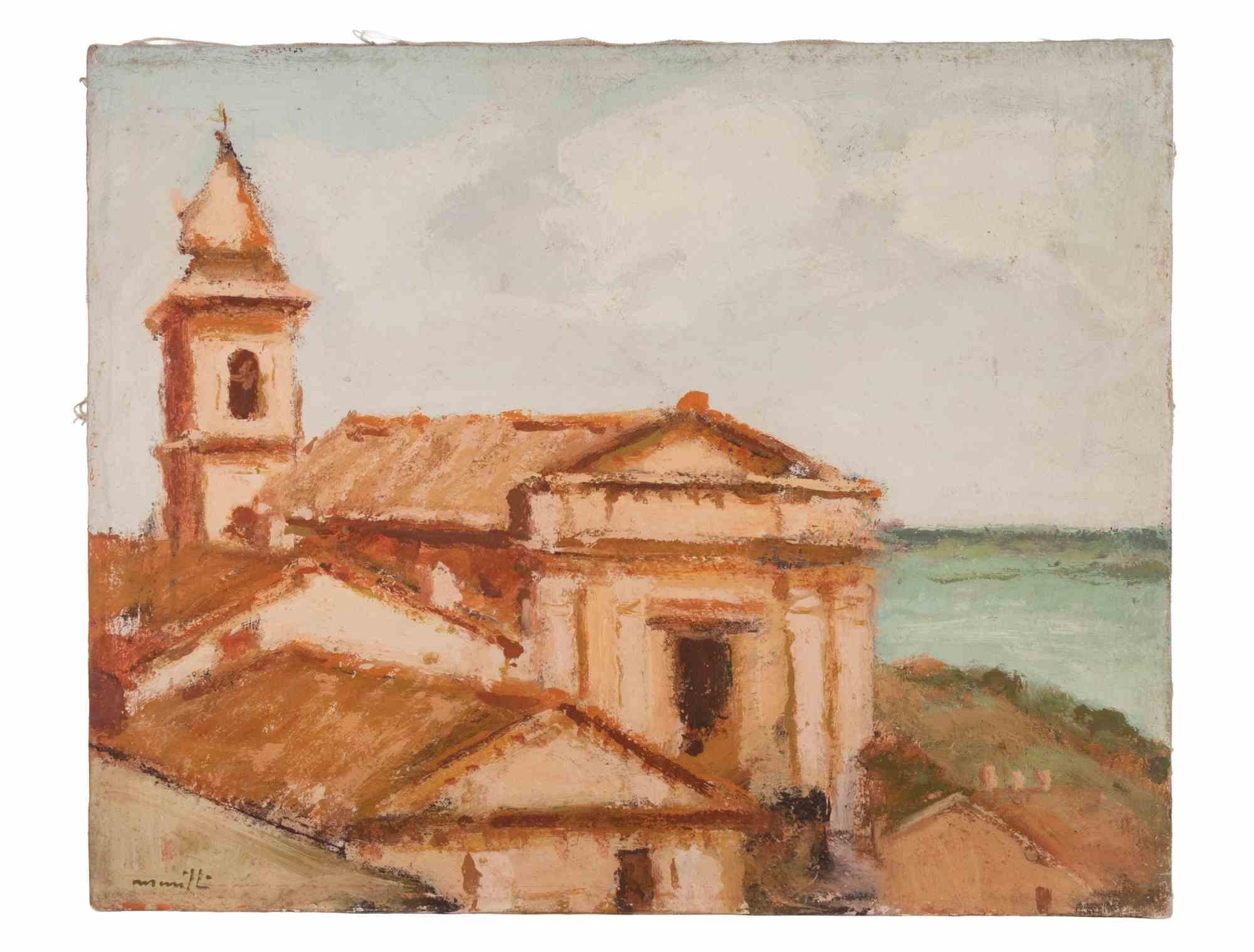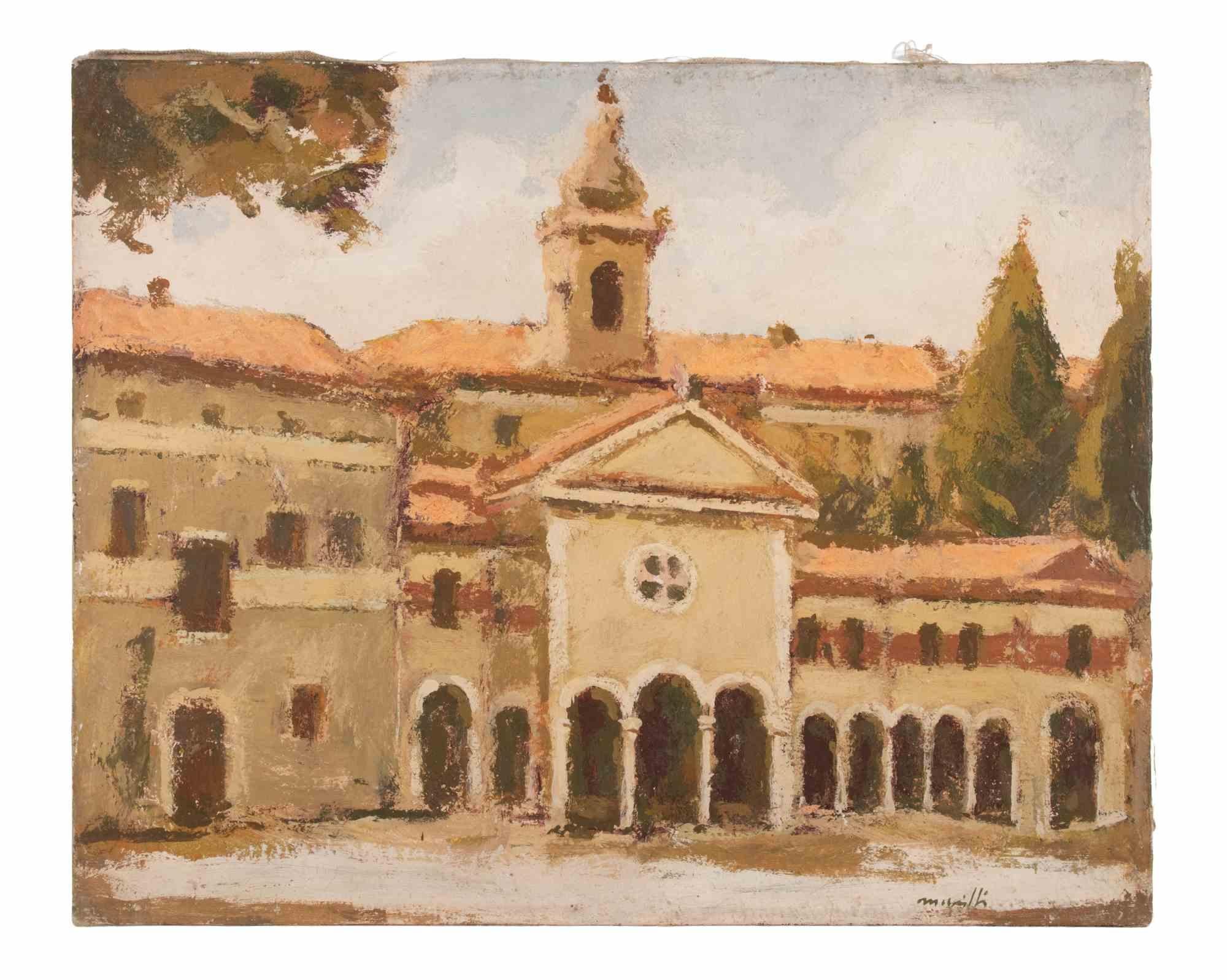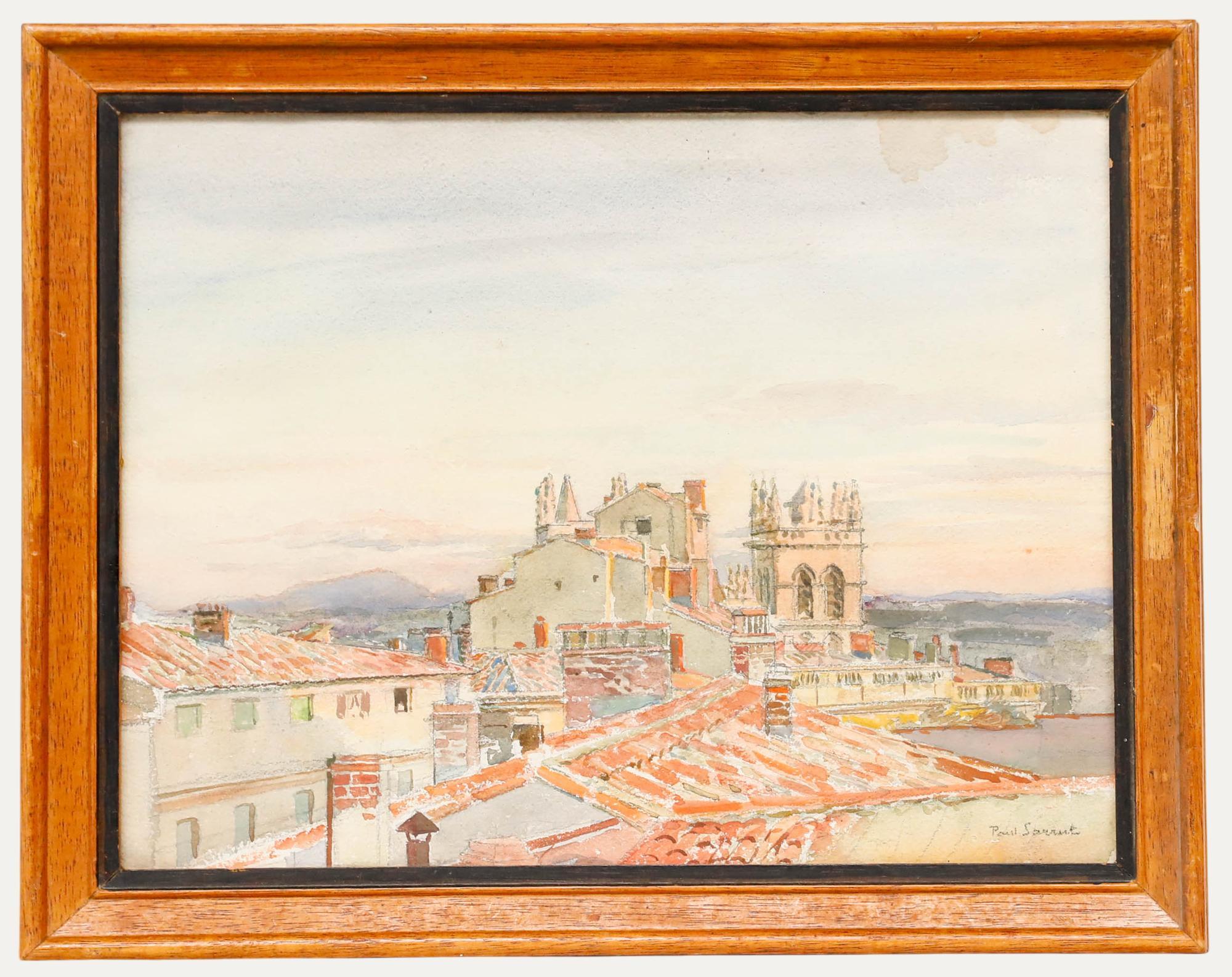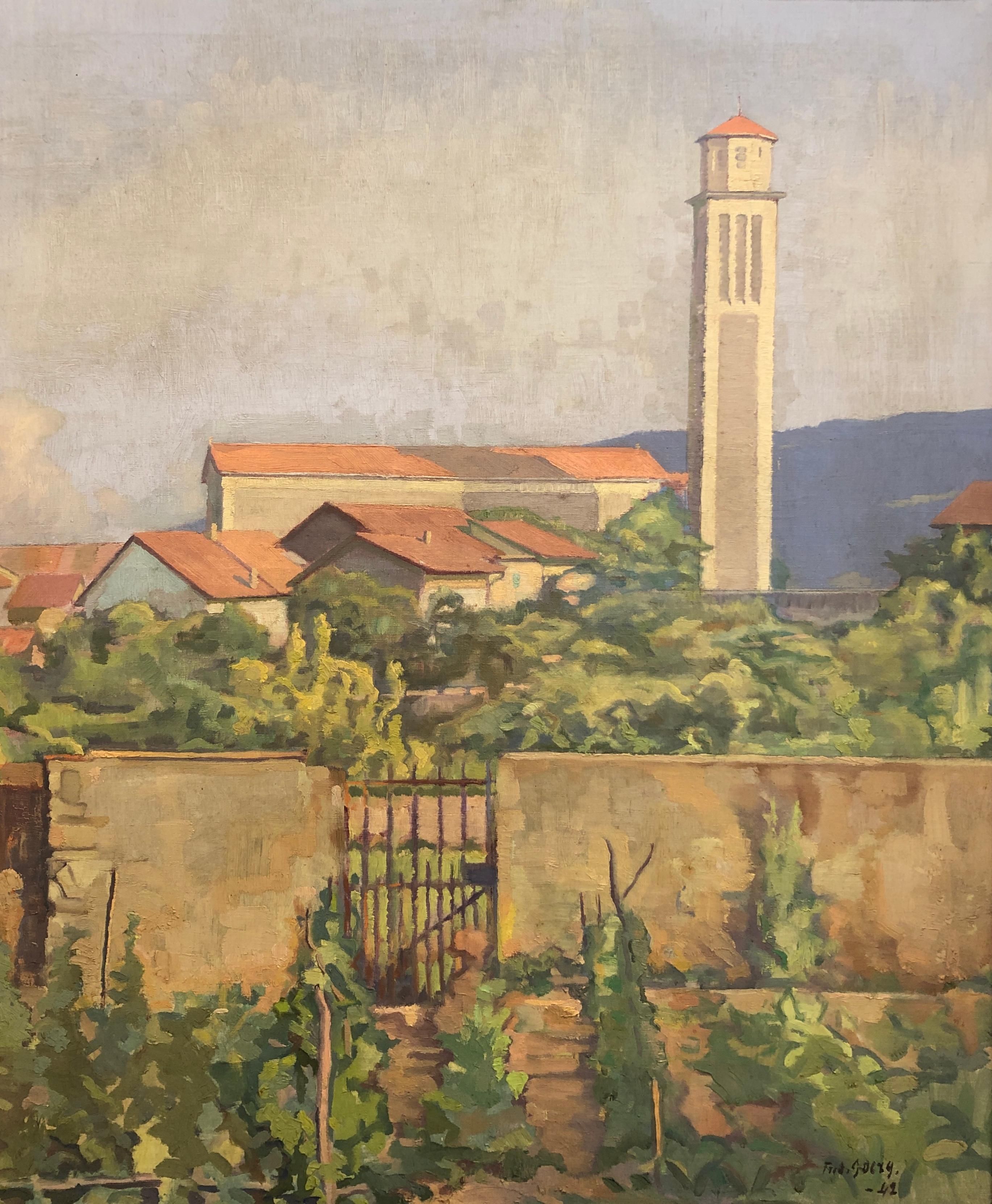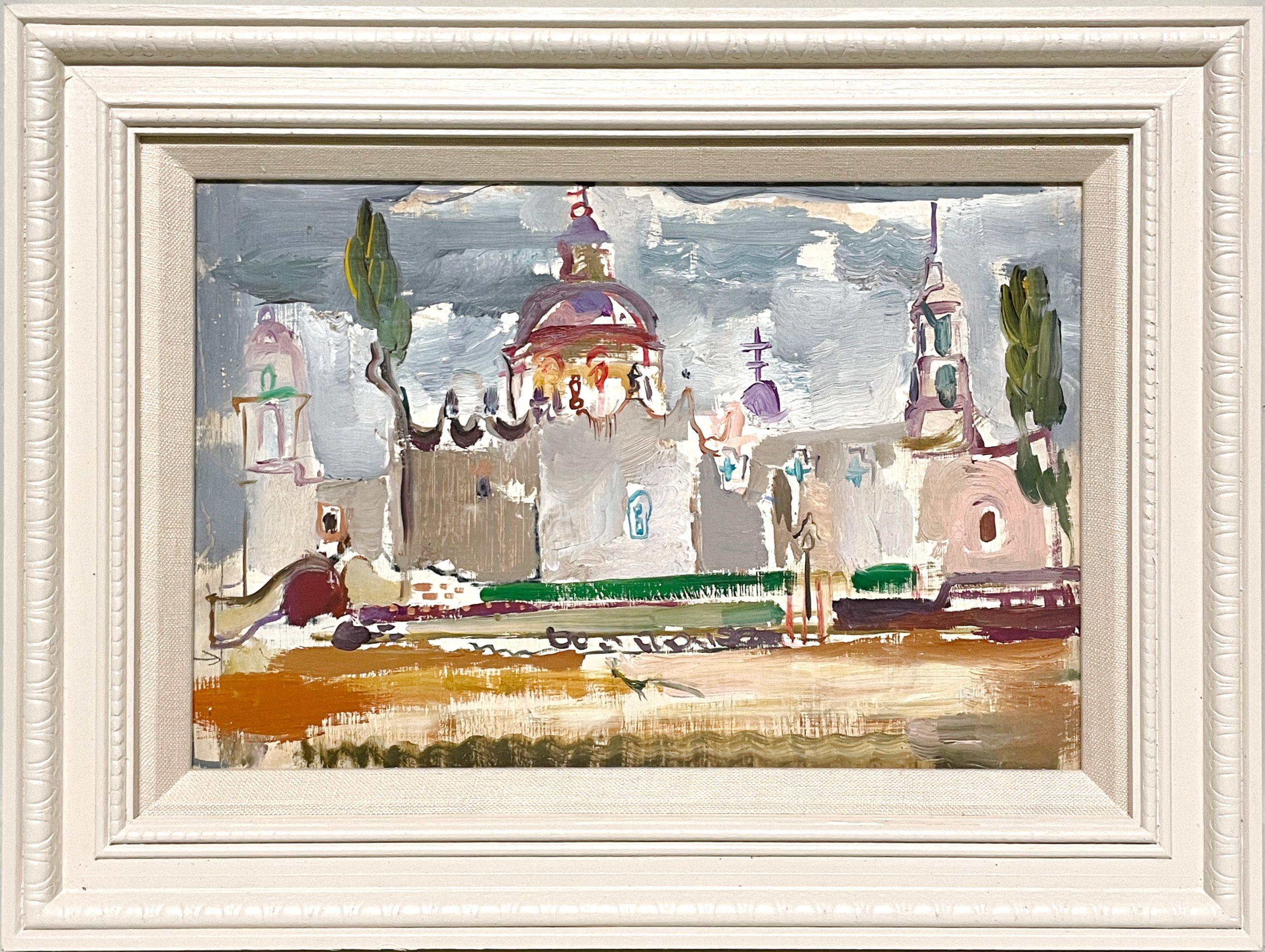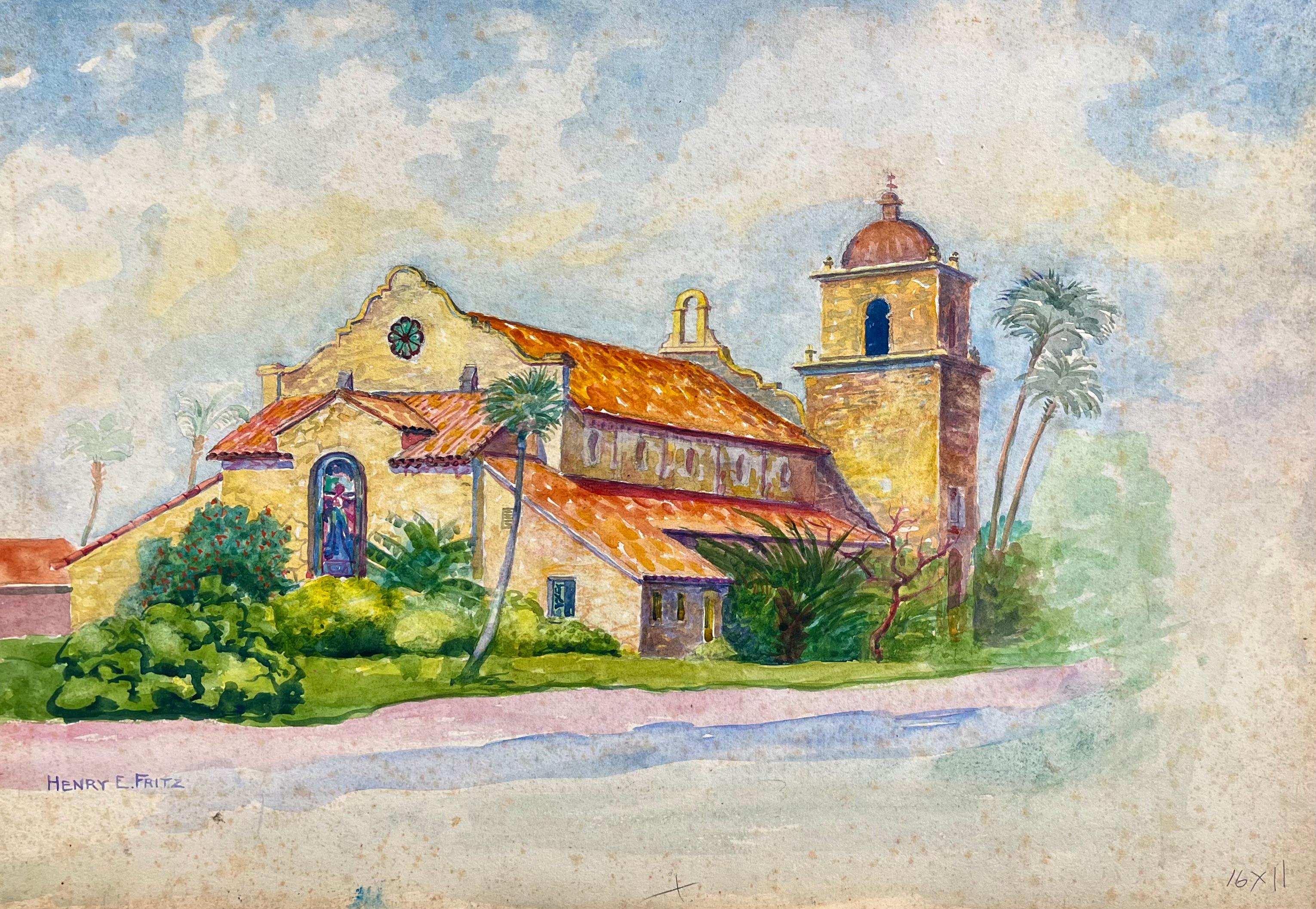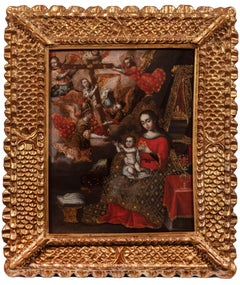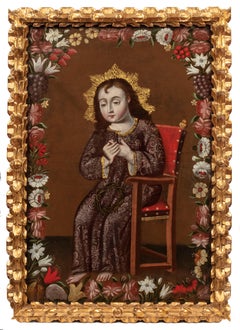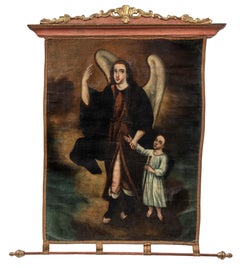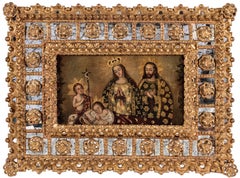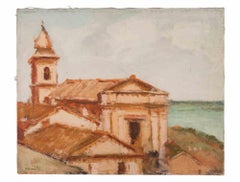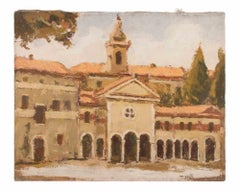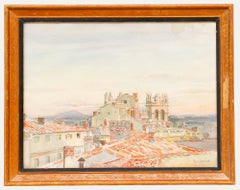Items Similar to View of St. John’s Cathedral, Antigua
Want more images or videos?
Request additional images or videos from the seller
1 of 6
Ezra BisbeeView of St. John’s Cathedral, Antigua1841
1841
$28,750
£22,291.90
€25,294.34
CA$41,211.89
A$44,812.06
CHF 23,611.58
MX$544,336.52
NOK 296,845.25
SEK 278,268.44
DKK 189,811.93
About the Item
Provenance:
Robert Hollberton, Antigua, ca. 1841
Private Collection, New York
The present painting depicts Old St. John’s Cathedral on the island of Antigua. The church was erected in the 1720s on the designs of the architect Robert Cullen. It measured 130 feet by 50 feet with north and south porches 23 x 20 ½ feet. The tower, 50 feet high with its cupola, was added in 1789. The church was elevated to the status of a cathedral, but disaster struck in the form of an earthquake that destroyed the building on 8 February 1843. A memorandum of that date relates the event:
“On Wednesday, 8th February, 1843, this island was visited by a most terrific and destructive earthquake. At twenty minutes before eleven o’clock in the forenoon, while the bell was ringing for prayers, and the venerable Robert Holberton was in the vestry-room, awaiting the arrival of persons to have their marriage solemnized, before the commencement of the morning service, the whole edifice, from one end to the other, was suddenly and violently agitated. Every one within the church, after the first shock, was compelled to escape for his life. The tower was rent from the top to the bottom; the north dial of the clock precipitated to the ground with a dreadful crash; the east parapet wall of the tower thrown upon the roof of the church; almost the whole of the north-west wall by the north gallery fell out in a mass; the north-east wall was protruded beyond the perpendicular; the altar-piece, the public monument erected to the memory of lord Lavington, and the private monuments, hearing the names of Kelsick, Warner, Otley, and Atkinson, fell down piecemeal inside; a large portion of the top of the east wall fell, and the whole of the south-east wall was precipitated into the churchyard, carrying along with it two of the cast-iron windows, while the other six remained projecting from the walls in which they had been originally inserted; a large pile of heavy cut stones and masses of brick fell down at the south and at the north doors; seven of the large frontpipes of the organ were thrown out by the violence of the shock, and many of the metal and wooden pipes within displaced; the massive basin of the font was tossed from the pedestal on which it rested, and pitched upon the pavement beneath uninjured. Thus, within the space of three minutes, this church was reduced to a pile of crumbling ruins; the walls that were left standing being rent in every part, the main roof only remaining sound, being supported by the hard wood pillars.”
The entrance from the southern side into the cathedral, which was erected in 1789, included two imposing statues, one of Saint John the Divine and the other of Saint John the Baptist in flowing robes. It is said that these statues were confiscated by the British Navy from the French ship HMS Temple in Martinique waters in 1756 during the Seven Years’ War and moved to the church. The statues are still in situ and can be seen today, much as they appeared in Bisbee’s painting, but with the new cathedral in the background (Fig. 1).
Little is known of the career of Ezra Bisbee. He was born in Sag Harbor, New York in 1808 and appears to have had a career as a political cartoonist and a printmaker. His handsome Portrait of President Andrew Jackson is dated 1833, and several political lithographs concerning the Jackson presidency are of this date, including: Political Quixotism (1833) and The Vision (1834), both in the Library of Congress. Bisbee drew and produced a lithograph of the First Unitarian Congregational Church in Brooklyn (Church of the Saviour), an example of which is in the Metropolitan Museum of Art. Portraits of William Hawley of Ridgefield and his wife are dated 1843 and one of Joseph Starbuck is dated 1847.
How long Bisbee spent in Antigua is unknown, but his return to the United States was recorded in passenger and immigration lists. Ezra Bisbee, described as a “portrait painter” arrived from Antigua in New York on the British Brig Quadruple on 18 April 1842 (Fig. 2), nine months after having painted St. John’s Cathedral and barely ten months before the earthquake which would destroy it. A lithograph, likely by Bisbee himself, partially reproduces the composition of our painting, including the animals grazing in the churchyard in the right foreground (Fig. 3).
According to an inscription on the reverse of the canvas, this painting was completed by Bisbee in July 1841. It is also inscribed on the stretcher bar “St. John…Cathedral…Antigua / Bisbee” and “Robert Hollberton Archdeacon + Rector,” which indicates that the painting was previously in the possession of and likely commissioned by Robert Holberton, Rector of St. John’s Cathedral and Archdeacon of Antigua, who is mentioned in the account of the earthquake related above (Fig. 4).
- Creator:Ezra Bisbee (1808)
- Creation Year:1841
- Dimensions:Height: 30 in (76.2 cm)Width: 26 in (66.04 cm)
- Medium:
- Movement & Style:
- Period:
- Condition:
- Gallery Location:New York, NY
- Reference Number:1stDibs: LU1025778141
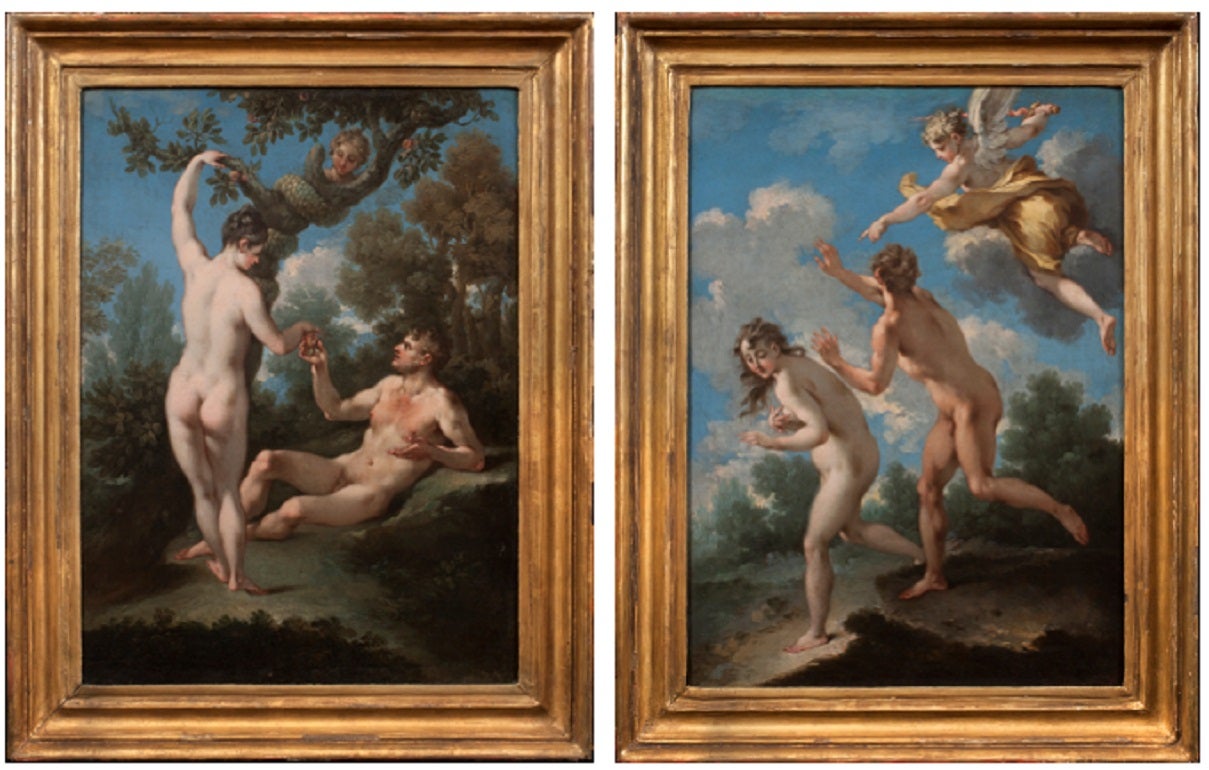
About the Seller
5.0
Recognized Seller
These prestigious sellers are industry leaders and represent the highest echelon for item quality and design.
Established in 1997
1stDibs seller since 2012
24 sales on 1stDibs
Typical response time: 9 hours
- ShippingRetrieving quote...Shipping from: New York, NY
- Return Policy
Authenticity Guarantee
In the unlikely event there’s an issue with an item’s authenticity, contact us within 1 year for a full refund. DetailsMoney-Back Guarantee
If your item is not as described, is damaged in transit, or does not arrive, contact us within 7 days for a full refund. Details24-Hour Cancellation
You have a 24-hour grace period in which to reconsider your purchase, with no questions asked.Vetted Professional Sellers
Our world-class sellers must adhere to strict standards for service and quality, maintaining the integrity of our listings.Price-Match Guarantee
If you find that a seller listed the same item for a lower price elsewhere, we’ll match it.Trusted Global Delivery
Our best-in-class carrier network provides specialized shipping options worldwide, including custom delivery.More From This Seller
View AllVirgin and Child with Angels Carrying the Cross (Vision of the Cross)
Located in New York, NY
Provenance: Fernandez Jimenez, Spain; part a family collection for over 80 years.
Prints transported to the New World for use in missionary work and religious instruction often serv...
Category
18th Century Old Masters Figurative Paintings
Materials
Canvas, Oil
Young Christ Pricked by a Thorn (Niño de la Espina)
Located in New York, NY
Provenance: Private Collection, Paraguay, for at least the last 80 years
Painted in the Viceroyalty of Peru during the 18th century, the present work depicts the young Christ as the Niño de la Espina—a devotional representation of Christ as he looks down at his bleeding finger, which has been pricked by the crown of thorns resting on his lap. The subject of the Young Christ Pricked by a Thorn was especially popular in Cuzco, and the rich details and decorative elements of our work perfectly capture the essence and style of the Cuzco School of painting.
In our painting, Christ wears an intricately patterned floor-length robe trimmed with gilded cuffs and a gilded collar. The delicate gilding, including the halo of golden rays emanating from his head, are executed in brocateado, an ornamental over-gilding technique that is characteristic of the Cuzco School. The red chair on which Christ sits also includes brocateado in the decorative gilt elements. The form of the chair takes inspiration from those commonly used by friars both in Spain and the Andes, known as silla frailera or sillon frailero, and was also frequently employed in related depictions of the Virgin Mary Spinning. Here the young Christ is rendered with soft, elongated features that reflect the influence of the Italian Mannerist painters who were pivotal to the formation of the Cuzco School, including the Jesuit friar Bernardo Bitti and Matteo Pérez del Alesio. Additionally, while its origins can be traced to Northern European pictorial traditions, the lush flower garland that frames the work is a signature feature of Cuzqueño painting...
Category
18th Century Old Masters Figurative Paintings
Materials
Canvas, Oil
A Guardian Angel Leading a Child
Located in New York, NY
Provenance: Private Collection, Argentina; there acquired by
Mr. and Mrs. Ernest T. Harper, New York, by 1960; by descent to:
Mr. and Mrs. Alan Harper, New York, until 2024.
This s...
Category
18th Century Old Masters Figurative Paintings
Materials
Canvas, Oil
A Magnificent Gilt Wood Mirrored Frame
Located in New York, NY
Provenance: Private Collection, Argentina; there acquired by
Mr. and Mrs. Ernest T. Harper, New York, by 1960; by descent to:
Mr. and Mrs. Alan Harper, New York, until 2024.
This extraordinary mirrored frame is an exuberant and nearly perfectly preserved example of Andean 18th-century decorative art. Pierced mirrored rosettes surrounding floral motifs are set against mirrored surrounds along a broad frieze bordered within and without by elaborate raised moldings, inlaid by small, shaped mirrors. Repeating ornamental motifs reflecting both Spanish and indigenous designs surround both the inside panel and the exterior perimeter, the four corners of which are punctuated by mirrored rosettes.
Glass mirrors were unknown to the indigenous population of the Americas prior to the arrival of Europeans (obsidian mirrors...
Category
18th Century Old Masters Figurative Paintings
Materials
Canvas, Mirror, Wood, Oil
Madonna and Child with Angels in the Clouds
Located in New York, NY
Provenance: Charles H. and Virginia Baldwin, Claremont, Colorado Springs, Colorado ca. 1907-1934; thence by descent until sold in 1949 to:
Charles Blevins Davis, Claremont (renamed Trianon), Colorado Springs 1949 -until gifted in 1952 to:
The Poor Sisters of Saint Francis, Trianon, Colorado Springs, 1952 until acquired, 1960, by:
John W. Metzger, Trianon, renamed as the Trianon School of Fine Arts, Colorado Springs, 1960-1967; when transferred to:
The Metzger Family Foundation, Trianon Art Museum, Denver, 1967 - 2004; thence by descent in the Metzger Family until 2015
Exhibited: Trianon Art Museum, Denver (until 2004)
The present work is a spectacular jewel-like canvas by Amigoni, rich in delicate pastel colors, most likely a modello for an altarpiece either lost or never painted. In it the Madonna stands firmly upon a cloud in the heavens, her Child resting on a delicate veil further supported by a cloud, as he gently wraps his arm around his mother’s neck. From above angels prepare to lower flowers and a wreath, while other angels and seraphim surrounding the two joyfully cavort.
Dr. Annalisa Scarpa, author of the forthcoming monograph on Jacopo Amigoni...
Category
18th Century and Earlier Figurative Paintings
Materials
Canvas, Oil
Portrait of Dr. Juan Ignacio Galves
Located in New York, NY
Signed and dated, along the bottom of the oval:
Dõr. Juan Ygnacio Galves nació el año de 1797. / Por J. Celestino Figueroa año de 1841.
Provenance: Luis Alberto Acuña (1904–1994), ...
Category
1840s Portrait Paintings
Materials
Canvas, Oil
You May Also Like
View of the Church - Oil Painting by Franco Marzilli - 1970s
By Franco Marzilli
Located in Roma, IT
Oil on canvas realized by Franco Marzilli (1934-2010) in 1970s.
Hand signed lower left.
Very good condition.
Franco Marzilli was born in Rome in 1934. He received his first artist...
Category
1970s Contemporary Figurative Paintings
Materials
Oil
View of Santuario della Madonna... - Oil Painting by Franco Marzilli - 1970s
By Franco Marzilli
Located in Roma, IT
Oil on canvas realized by Franco Marzilli (1934-2010) in 1970s.
Hand signed lower right.
Very good condition.
Franco Marzilli was born in Rome in 1934. He received his first artis...
Category
1970s Contemporary Figurative Paintings
Materials
Oil
Paul Sarrut - 20th Century Oil, The Cathedral at Montpellier
Located in Corsham, GB
A charming watercolour scene depicting the cathedral of Montpellier in France. Signed to the lower right. Presented in an oak frame with a black slip. On paper.
Category
20th Century Landscape Paintings
Materials
Oil
From the kitchen garden view of the church of St François-de-Sales, Chêne-Bourg
Located in Genève, GE
Work on canvas
Brown wooden frame
76.5 x 65.5 x 4.5 cm
Category
1940s Modern Landscape Paintings
Materials
Oil
Early Mexican City Scene by Chicago Artist Francis Chapin, San Miguel de Allende
By Francis Chapin
Located in Chicago, IL
A charming, vibrant, early Mexican city street scene by famed Chicago Modern artist Francis Chapin (Am. 1899-1965). Depicting a quiet, picturesque view of the rooftops and cathedral...
Category
1940s American Modern Landscape Paintings
Materials
Oil, Masonite
St. Augustine Cathedral, Florida
Located in Fredericksburg, VA
This spectacular watercolor painting by Henry Eugene Fritz, titled "St. Augustine Cathedral, Florida," beautifully captures the historic and quiet essence of one of Florida's most sa...
Category
Early 20th Century Impressionist Landscape Paintings
Materials
Paper, Watercolor
